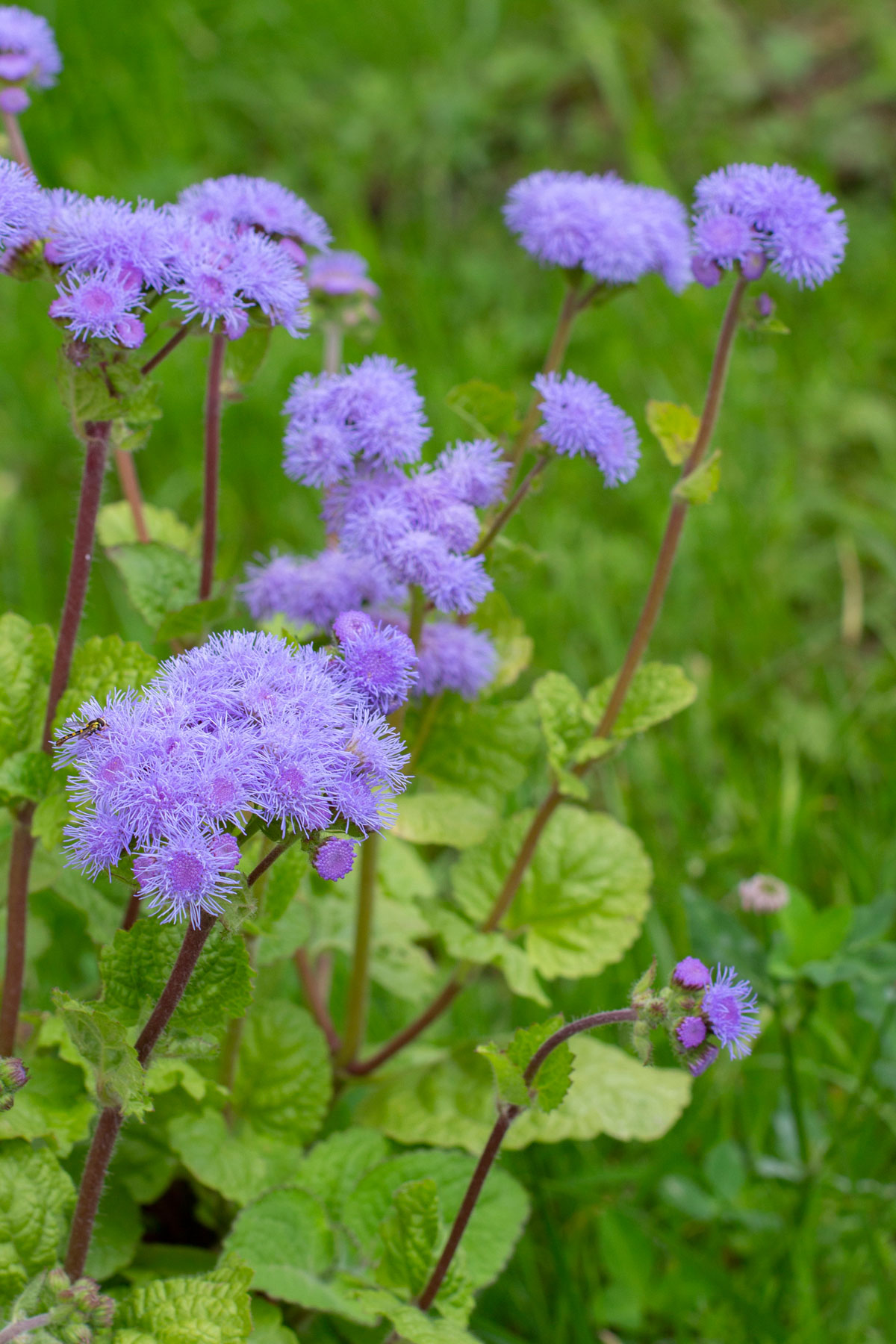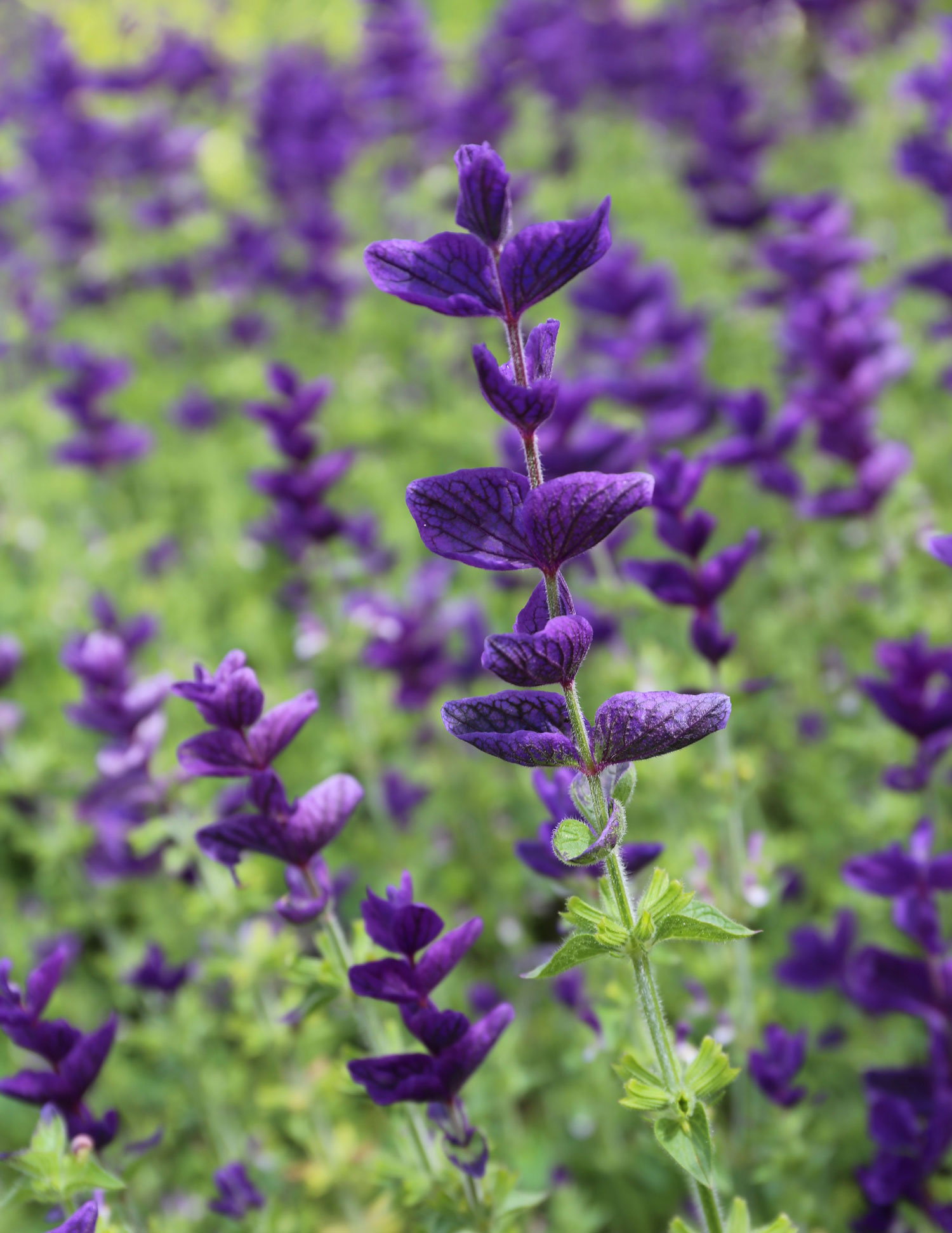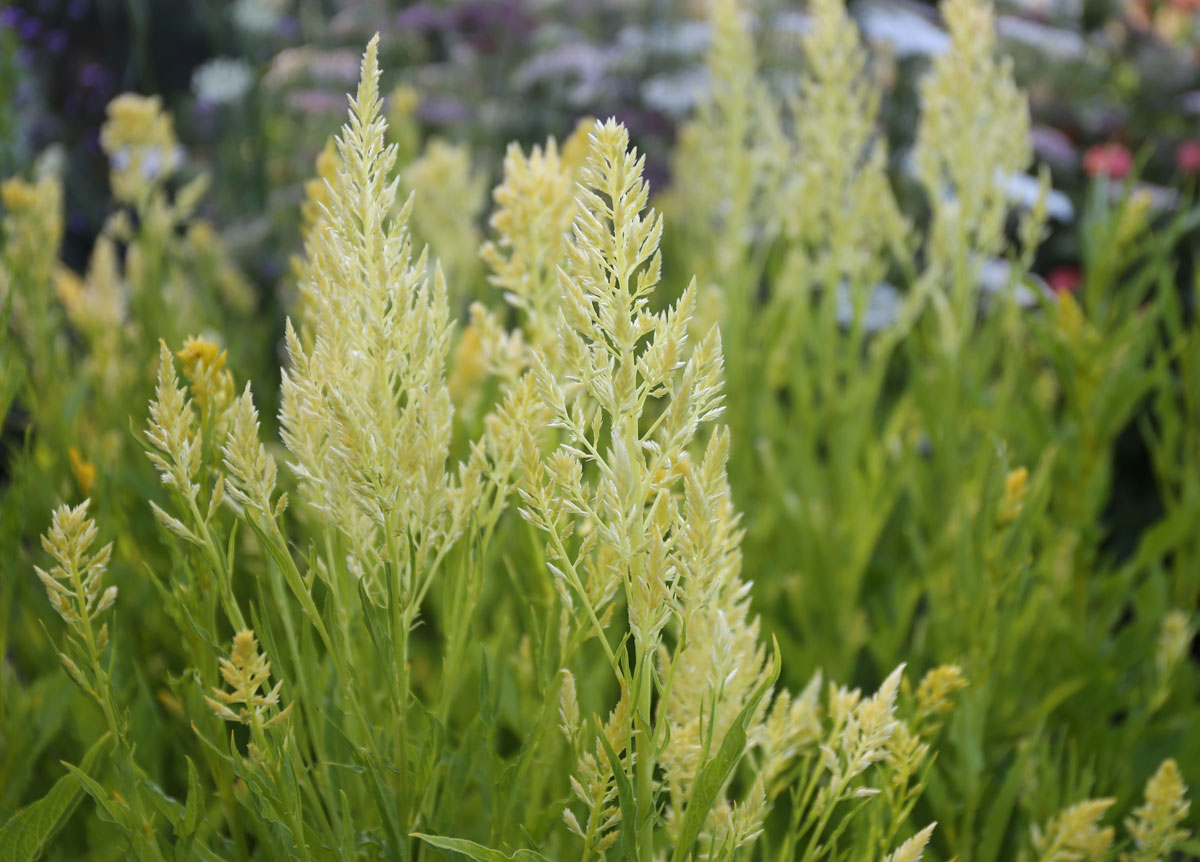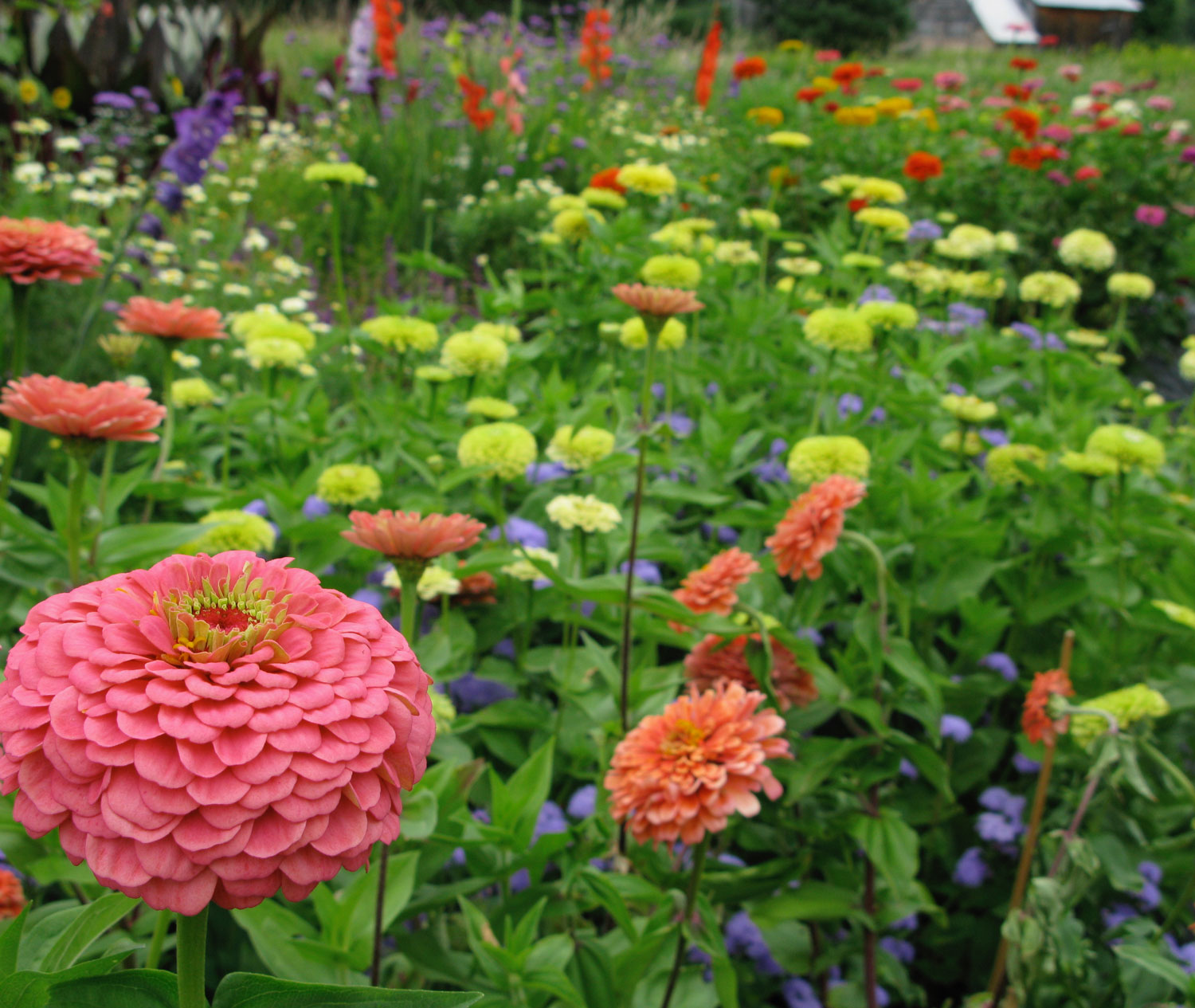Top 10 Annual Flowers for Cutting Gardens
Starting flowers from seed is a fun early spring activity and can save you a lot of money. If you want to grow some of the best annual flowers for cutting, growing from seed is also a necessity.
Garden centers offer plants with broad appeal, so you'll rarely find annuals such as phlox drummondii, salvia horminium, zinnia Queen Lime Blush or amaranth Oeschberg. Yet these are the annual flowers that will elevate all your summer bouquets from good to great. Read on to learn about 10 cutting garden favorites that are easy to grow from seed.

Easy Annuals for Summer Bouquets
Ageretum
You may be familiar with dwarf ageretums, which are often used as bedding plants. Taller varieties such as Blue Horizon are very different. They grow 24-30” tall and have dark stems, fuzzy blue flower heads and a long vase life. Sow the tiny seeds indoors under lights, 6-8 weeks before the last frost. Remember not to cover the seeds with soil as they need light to germinate. When the seedlings have two sets of true leaves, transplant them into individual growing cells. In the garden, space the plants 12” apart and harvest when flowers are three-quarters open. Keep the plants deadheaded and they will flower until frost. No support is needed.

Bachelor’s Buttons
For best results, bachelor's button seeds should be planted directly into the garden. The plants grow best in cool weather, so sow the seeds in early spring as soon as the ground can be worked. Cover the seeds lightly and keep the soil surface moist until plants emerge. When the seedlings have one or two sets of true leaves, thin them to stand at least 6” apart. To extend the harvest season, sow the seeds in 2 or 3 batches, several weeks apart. Pick sprays when most of the flowers are at least half open. You may find the plants need support to keep the stems from flopping.

Sunflowers
For best results, plant sunflower seeds directly into the ground after the last frost. If you have problems with chipmunks and birds making off with the seeds, you will need to start them in pots. Transplant when the plants are still young and disturb the roots as little as possible. To encourage more stems, you can pinch off the top of each plant when it has three sets of true leaves. To extend the cutting season, plant varieties with different maturity dates. Or, sow some seeds early and some a few weeks later. Branching varieties with 4-5" diameter flowers, such as Jade (shown above) produce more blooms and are easier to use in arrangements. Sunflowers may or may not need support, depending on the height of the varieties you're growing and how exposed they are to wind.

Cosmos
There are dozens of pretty varieties to choose from in a wide range of colors and flower styles. Direct sow seeds after the last frost. Barely cover them and keep the soil surface moist until the seedlings emerge (1-2 weeks). Thin as needed so the plants stand about 12” apart. Cut stems when the flowers first open and before the petals have completely unfurled. Choose single, daisy-like flowers, or doubles and semi-doubles. Taller varieties (4-feet or more) may need staking.

Zinnias
Direct-sown plants always catch up to transplants and are typically more robust. Plant the seeds into your garden after the last frost. Cover lightly and keep the soil surface moist until the seedlings emerge. When true leaves appear, thin to 12” spacing. (Keep some of the extras to replace any plants that don’t make it.) Pick zinnias when the flowers are fully open and stem right below the flower has stiffened. The “Queen” series (shown above) produces flowers that display a blend of lovely colors.

Ammi majus and Dara
These are cultivated cousins of Queen Anne’s lace. The lacy flowers and feathery foliage make every bouquet better. The flowers of Ammi majus are white or pale green while those of Dara (shown above) are a mix of white, pink and burgundy. Direct sow Ammi majus seeds after the last frost. To extend the cutting season, make two or three sowings, several weeks apart. Dara becomes a much larger plant and can reach a height of 3-4 feet. It's worth starting these seeds indoors under lights. When transplanting Dara into the garden, space the plants 12-18” apart and be prepared to provide support stakes to keep them upright.

Amaranth
Amaranth flowers can add volume and texture to any arrangement. For upright, burgundy flowers and dark foliage, seek out the varieties Red Spike or Oeschberg. Copper-colored Hot Biscuits is also excellent. Consider growing some of the cascading types with red, green or coral flowers. These include Love Lies Bleeding, Emerald Tassles, and Coral Fountain.
Amaranth seed is very fine and best started indoors under lights, 4 to 6 weeks before the last frost. Barely cover the seeds. Seedlings should be spaced 12-15” apart in the garden. Pinch when the plants are young to encourage bushy growth and more slender stems with smaller flower clusters (better for cutting). Plants grow vigorously until frost and usually don't require support.

Phlox drummondii
Unlike perennial garden phlox, annual phlox grows just 18" tall and produces 3 to 4" flower clusters. This traditional cutting garden favorite adds a relaxed, country feel to mixed bouquets. You can choose from many beautiful colors, including antique hues such as Cherry Caramel. Direct sow the seeds in early spring, covering lightly but completely as seeds need darkness to germinate. Thin seedlings to 8-12” apart, taking care not to disturb the roots. Harvest stems when at least half the flower cluster has fully opened. Keep the plants deadheaded to encourage them to continue blooming. No support is needed.

Salvia horminium
Also known as Salvia viridis or annual clary sage, this plant is grown for its colorful, leaf-like bracts. Seeds are usually sold as a mix of purple, pink and white, but are sometimes available in separate colors. Purple always seems to be the most vigorous and showy. Start the seeds indoors under lights, 6 to 8 weeks before the last frost. Do not cover them as they need light to germinate. Transplant when seedlings have 2 or 3 sets of true leaves. Harvest at any time. Plants tolerate light frost and continue blooming right through the fall. Stems are stiffly upright, so the plants need no support. Flowers last for 10 days or more in a vase.

Matricaria
Also known as feverfew, this is an outstanding bouquet filler. The 30” tall plants have lacy foliage and produce clusters of little white buttons with yellow centers. Seeds are very small, slow growing and need light to germinate. Start indoors under lights, 6-7 weeks before the last frost. Transplant into separate cells when seedlings have 2-3 sets of true leaves.
Keep the plants deadheaded (cut spent stems down to the base of the plant) and they will continue flowering to frost. Plants may self-sow and in zones 5 and warmer they may survive the winter. Look for Tanacetum parthenium 'Tetra White' (shown above) and lime-leaved Tanacetum aureum. No support is needed.

Celosia
There's more to celosias than the stiff cockscomb types. Look for pampas plume or Texas plume as well as flamingo feather. Plume celosia has feathery, slightly fuzzy flowers that are excellent "weavers" in mixed arrangements. Newer varieties include soft hues such as the one shown above, called 'Sylphid'. Flamingo feather produces clusters of mini-plumes that have a tighter form.
Start celosia seeds indoors under lights, 6 to 8 weeks before last frost. Don’t cover them as they need light to germinate. Transplant seedlings into separate cells once they have one or two sets of true leaves. Move outdoors after danger of frost, spacing plants 6 to 12” apart. They will grow 2 to 3 feet tall with branching, 12” stems. No support needed.

Here are a few more cutting garden favorites that are easy to grow from seed: nicotiana alata 'Lime Green', love-in-a-mist (Nigella damascena), sweet peas, snapdragons, scabiosa, verbena bonariensis, larkspur, kiss-me-over-the-garden-gate (Polygonum orientale), and China asters.
Tips for Success
Cutting garden annuals always perform best in full sun. Most will bloom all summer long as long as you deadhead weekly. Removing spent flowers will also minimizes disease problems and deters earwigs and other pests.
Cut your flowers in the morning or evening when they are not stressed by the sun. Bring a bucket of clean water out into the garden so cut stems are in water almost immediately. Scissors can crush stems and inhibit water uptake. Flower farmers usually prefer a sharp knife for clean, quick cuts.
If you plan to grow flowers from seed, be sure to check out the selections offered by Johnny’s Selected Seeds and Select Seeds. For an excellent guide to growing flowers from seed, read: The Gardener’s A-Z Guide to Growing Flowers from Seed to Bloom.
Learn more here: How to Design a Cutting Garden, How to Make Cut Flowers Last Longer, DIY Wedding Flowers
